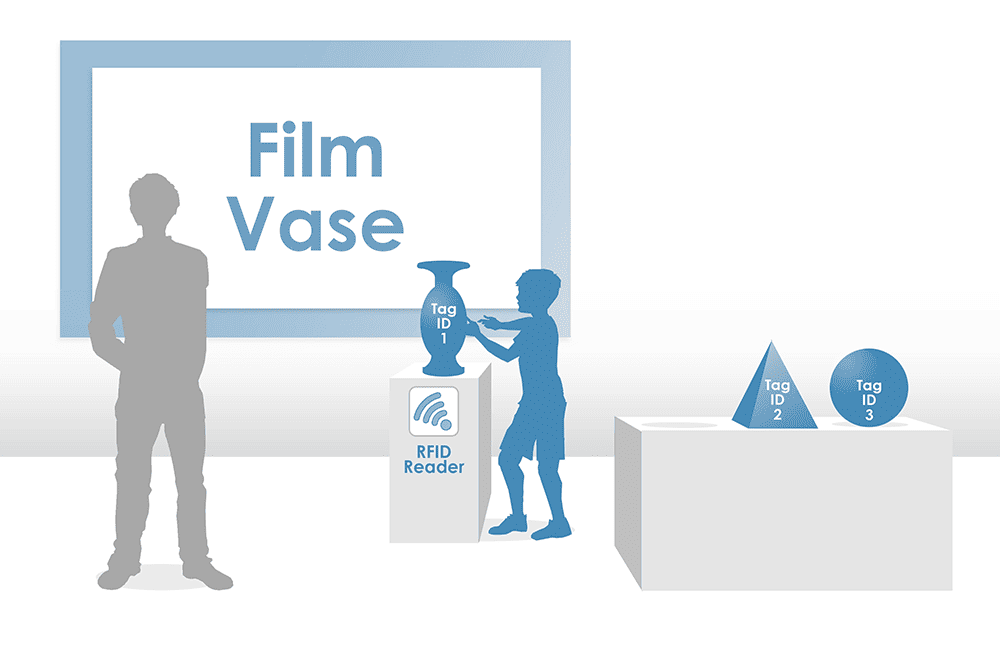Home » Periphery »
RFID
for person & object recognition
Integrate RFID functionality in your projects!
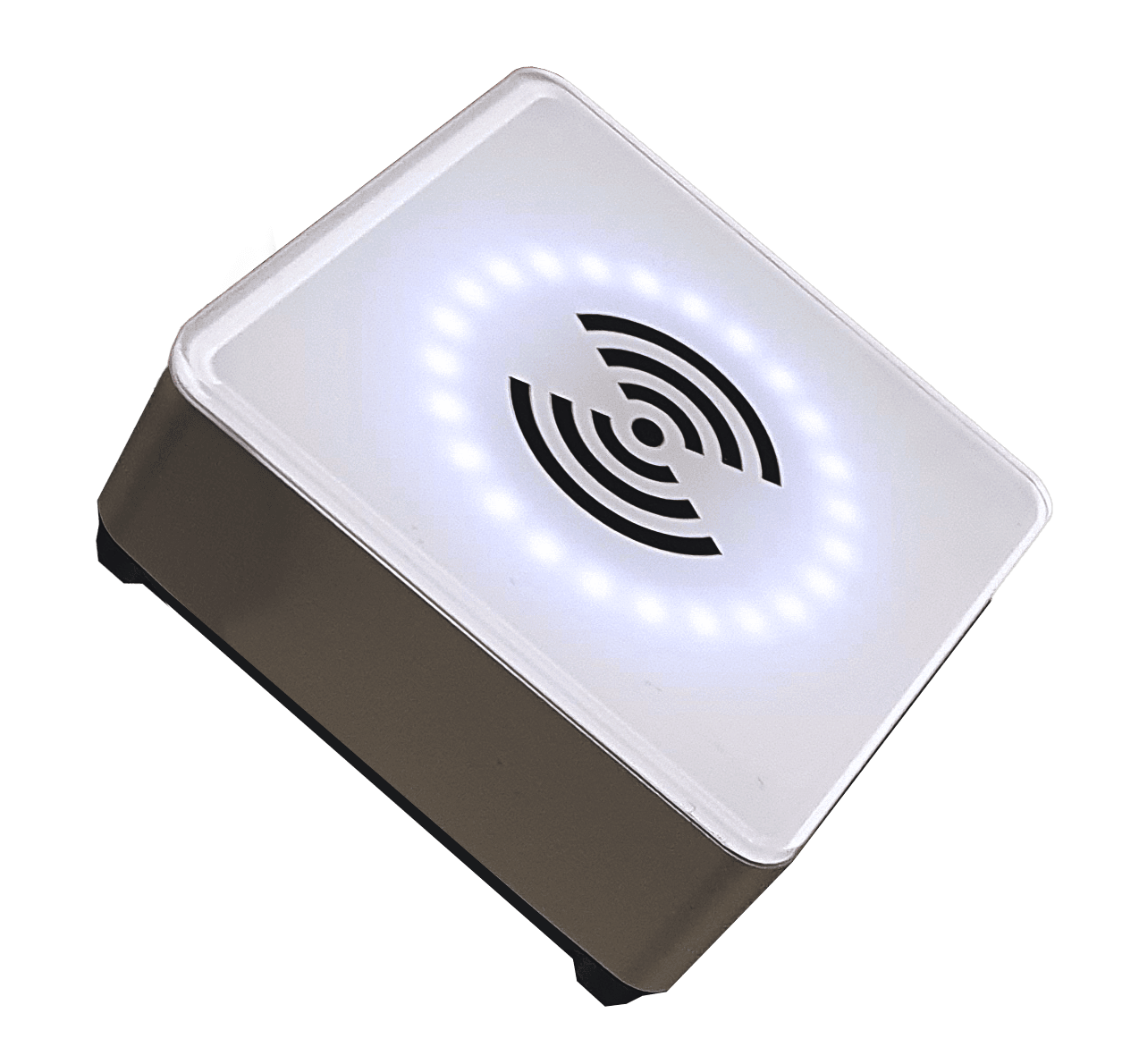
Price
RFID reader with standard printing
from 289,00 €
Custom printed surface possible
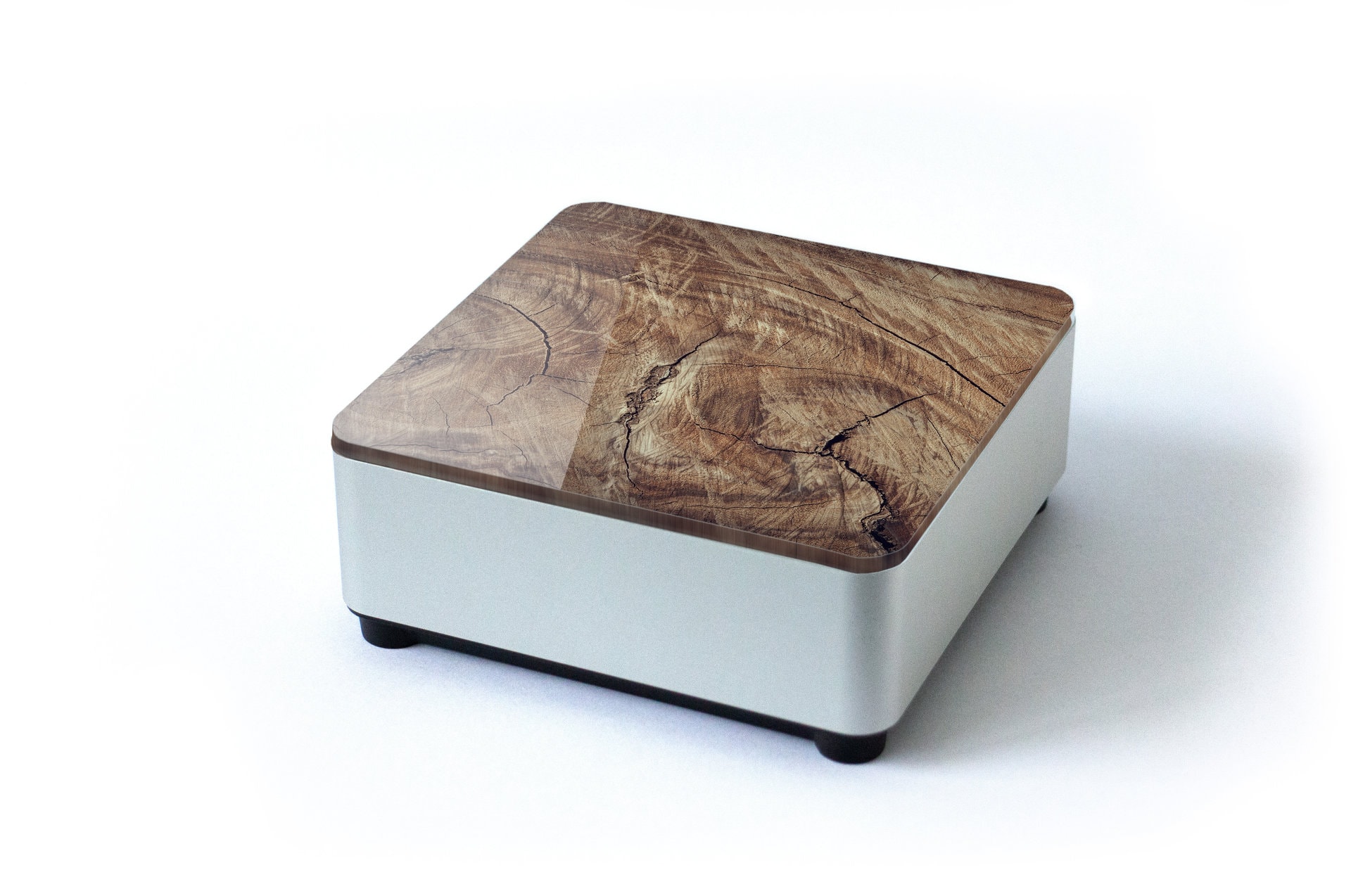
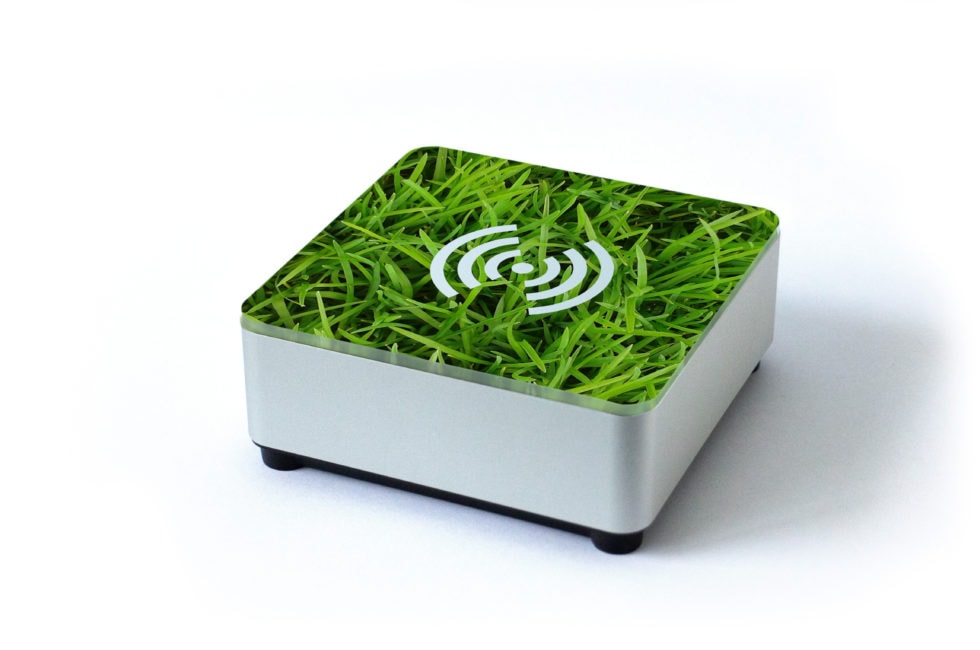
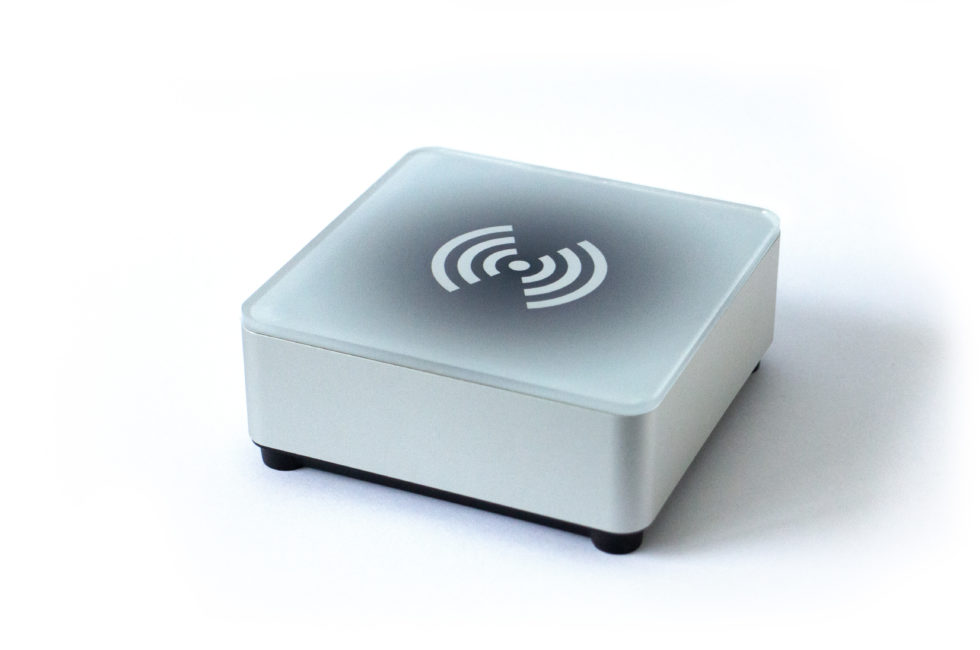
Installation variants of RFID readers
Our RFID readers can be recessed flat and adapted to the environment using individual printing. In addition, the feedback of the built-in LED ring can be customized.
RFID readers can be installed in different ways:
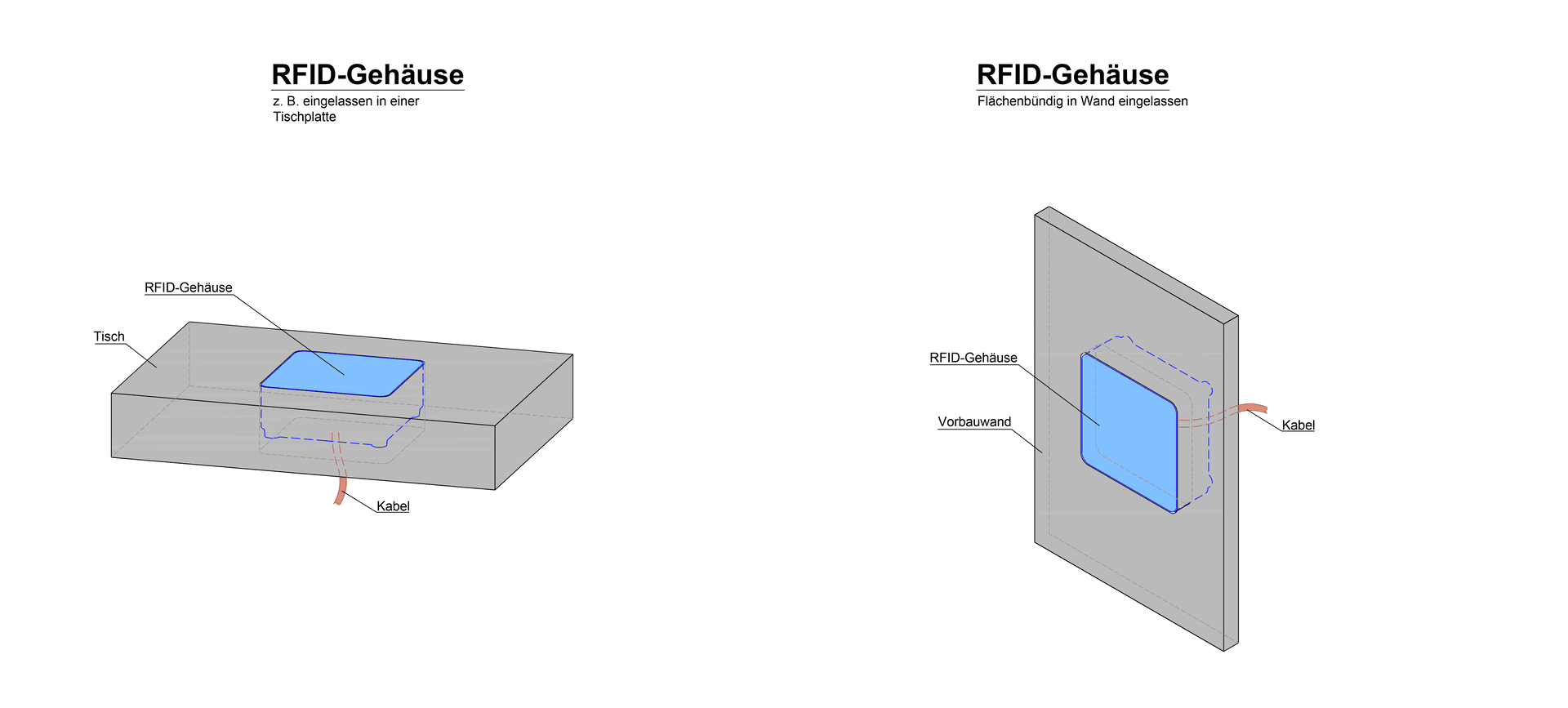
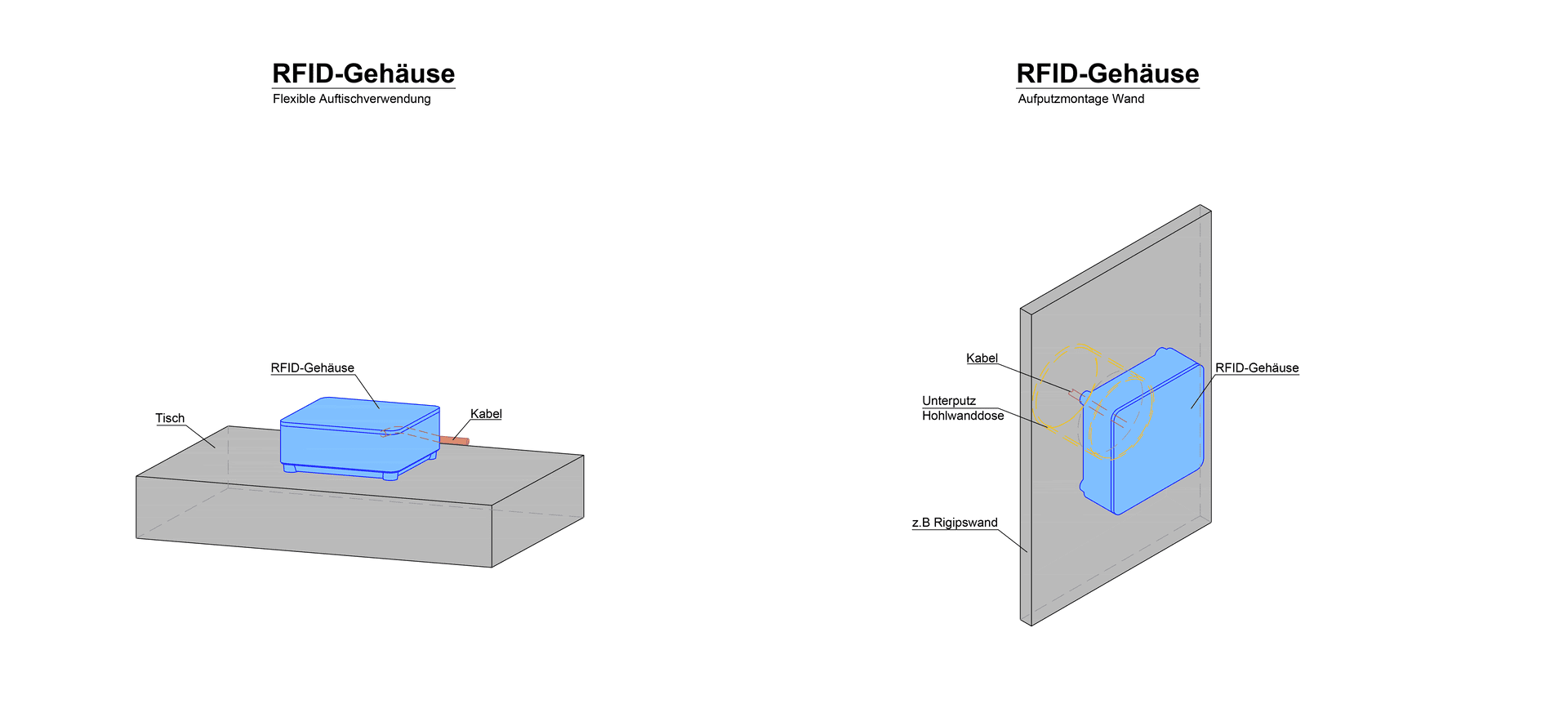
Object recognition using RFID readers in museums, science centers, or exhibitions
For example, RFID tags can be placed in movable exhibits. If a visitor now places this object on a reader, corresponding information can be started in the form of audio or video contributions.
Application example:
Customized presentation for visitors
Here, each visitor is equipped with an entrance ticket that has a transponder integrated into it.
This allows visitors to be identified at the individual information stations (without personal data and, of course, voluntarily). The facts about the exhibits can be tailored to the respective visitors, i.e. they receive information that corresponds to their level of knowledge.
Therefore, the German Steam Locomotive Museum offers the possibility for visitors to indicate their level of knowledge and language before starting the tour. They place their transponders on an RFID reader and select “German, English or French” and “Expert, Advanced or Beginner” via a touch screen. This data is stored in the database.
If a visitor is now at an exhibit, he or she simply swipes the transponder card over an integrated reader and receives information in the corresponding language and level of knowledge (beginner, advanced, expert).
The record will be deleted after the issuance has been completed and the ticket has been returned. The transponder can then be used again for the next person.
Of course, this does not exhaust the application possibilities that an RFID implementation with our system offers. For example, visitors could assign their email address to the transponder and thus receive information about the exhibits they have visited on request.
What is RFID?
The components of an RFID system are, on the one hand, the transponder or the radio label, which contains an identifying code. This is located on the object or living being. On the other hand, a reader is required that can read the code.
The size of RFID transponders can vary depending on requirements. For example, RFID transponders that are barely larger than a grain of rice are implanted in pets.
In addition, a particularly favorable option is a process that allows the transponders to be printed with stable circuits made of polymers. This allows the size and also the price of the transponders to be further reduced, as well as making the reading of the devices more inconspicuous.
Product RFID

Integrate RFID functionality in your projects!
The reader can identify individual objects (admission tickets, exhibits, etc.) using tags so that individual responses can be made.
Hardware
The network-enabled RFID readers communicate with the software module using their IP address. Due to the PoE (Power over Ethernet) capability, a CAT5 connection is sufficient for each reader as a connecting cable, which minimizes the installation effort.
A reader can be installed directly in a standard installation box or “invisibly” behind glass or wood.
Software
The RFID Provider from NeuroomNet communicates with the readers via a network. The IDs of the tags used can simply be passed on to the media control system or previously linked to entries from the database.
